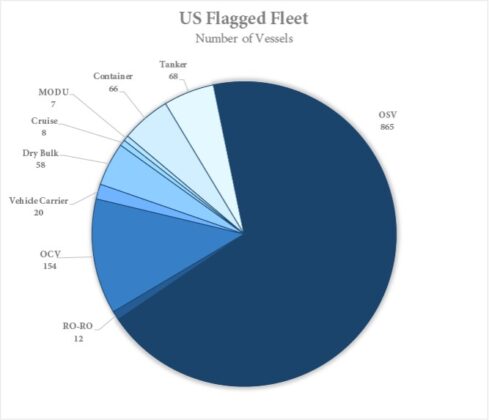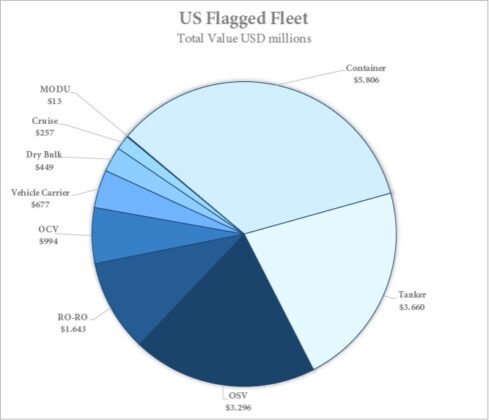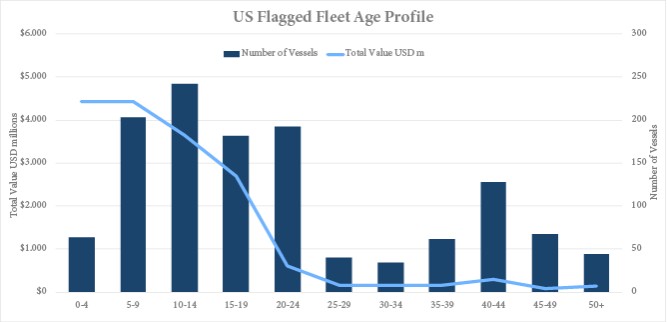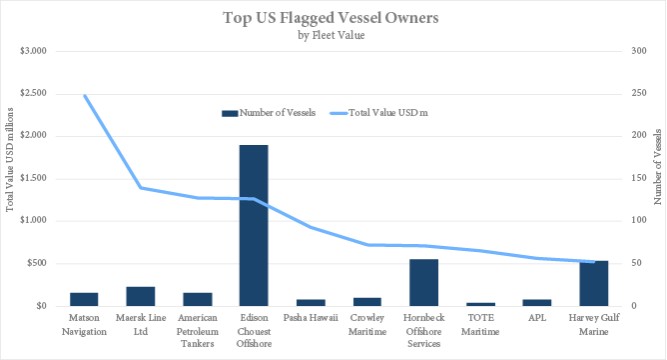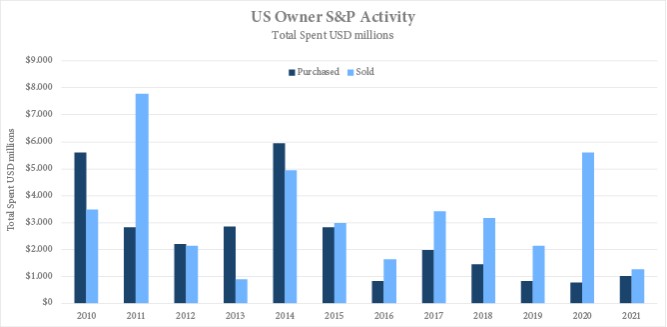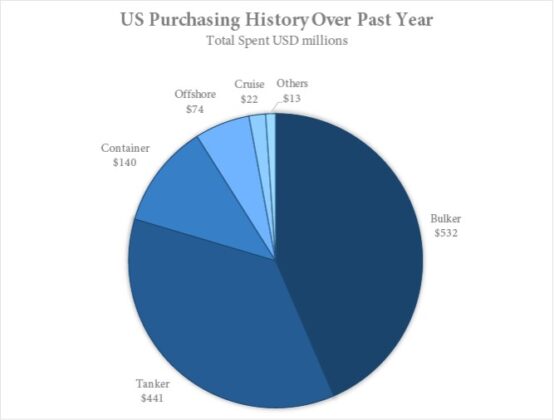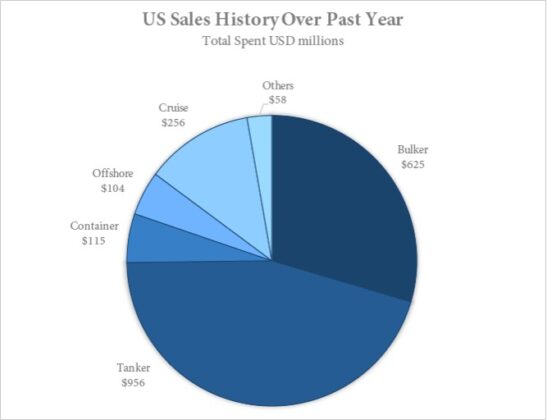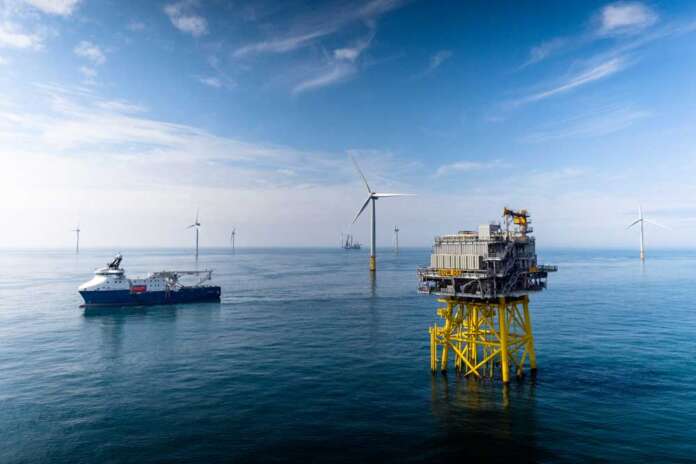
Offshore Support Vessels (OSV) are dominating the US flagged fleet, taking a share of almost 69 % of the total fleet flying the star-spangled banner.[ds_preview]
Construction Vessels (OCV) are the second largest segment accounting for 154 ships, followed by tankers (68), container vessels (66) and dry bulk carriers (58).
However, the fleet value picture is quite different with US-flagged containerships worth 5.8 bn $ taking a share of almost 35 % of the total fleet value of 16.8 bn $. The tanker segment is the second most valuable at 3.7 bn $, followed by the large OSV sector valued at 3.3 bn $. Although a small segment, RoRo is the fourth most valuable, standing at 1.6 bn $ for only twelve ships.
US operator Matson Navigation is running a fleet of only 16 US flagged ships but is clearly leading in terms of fleet value (2.5 bn $). From a fleet value perspective, Matson is followed by Maersk Line (23 ships, 1.4 bn $) and American Petroleum Tankers (16 ships, 1.3 bn $). The largest owners by number of vessels – you guessed it – are offshore service companies Edison Chouest (190 vessels), Hornbeck and Harvey Gulf Marine.
While there is quite a chunk of older and less valuable vessels in the US flagged fleet between 20 and 50 years old, the group of zero to 19-year-old vessels with high asset values is even larger.
Purchasing activity of US owners has been slow over the past five years with a low point reached in 2020. The sale activity has been at higher levels recently and both sale and purchasing activity is already picking up this year. The overall values traded are on a downward trend, especially if viewed from a ten-year perspective. Over the past twelve months, mostly bulkers (532 mill. $) and tankers (441 mill. $) were purchased by US accounts. These two segments also dominate the recent second-hand sales picture.






